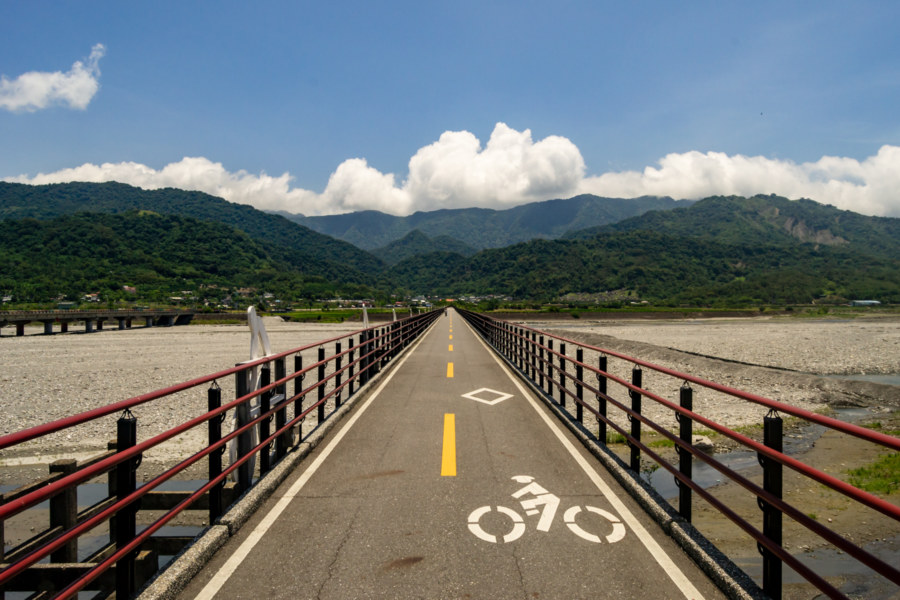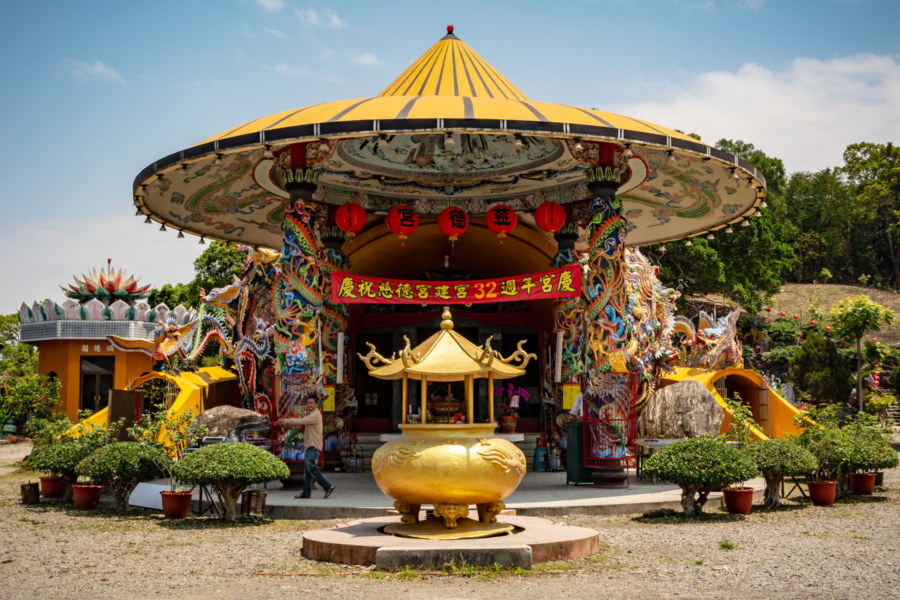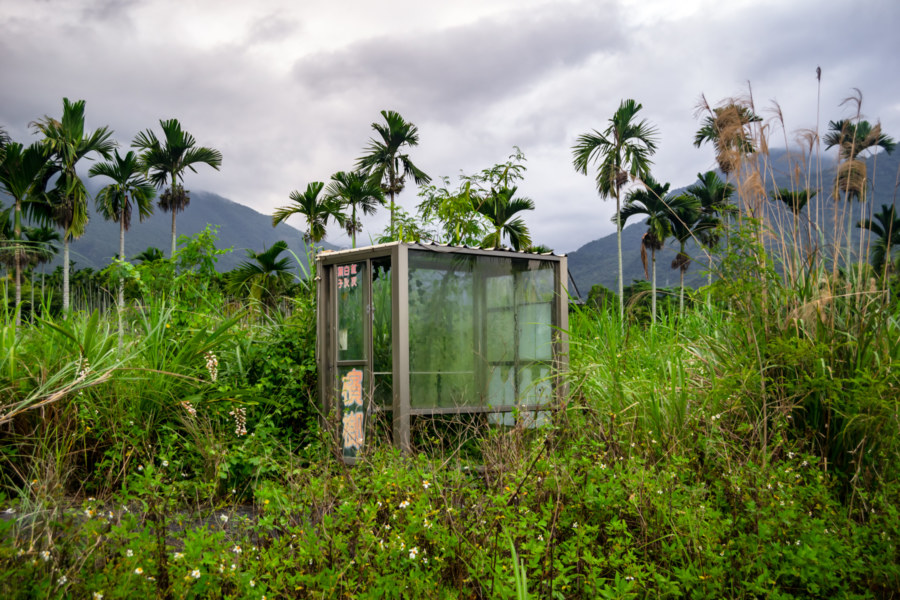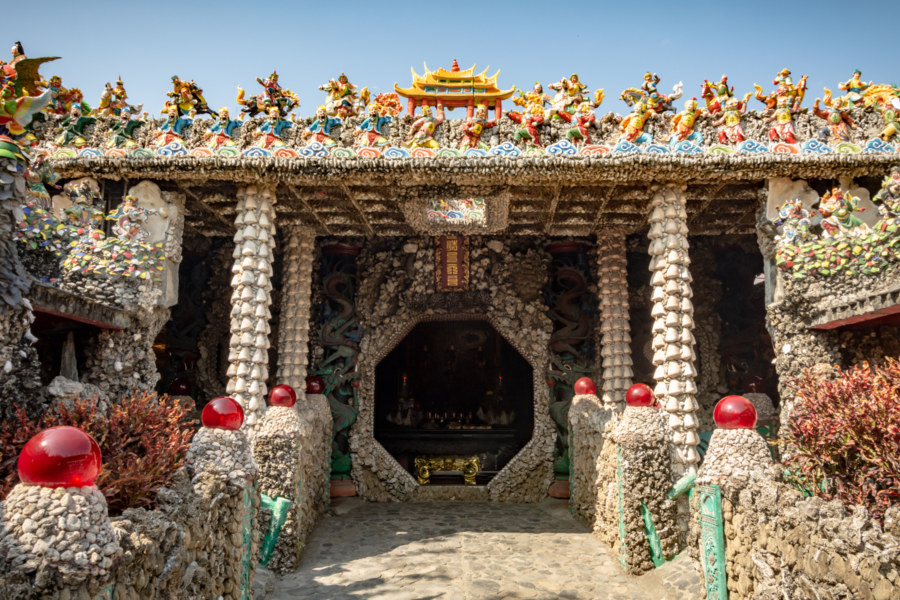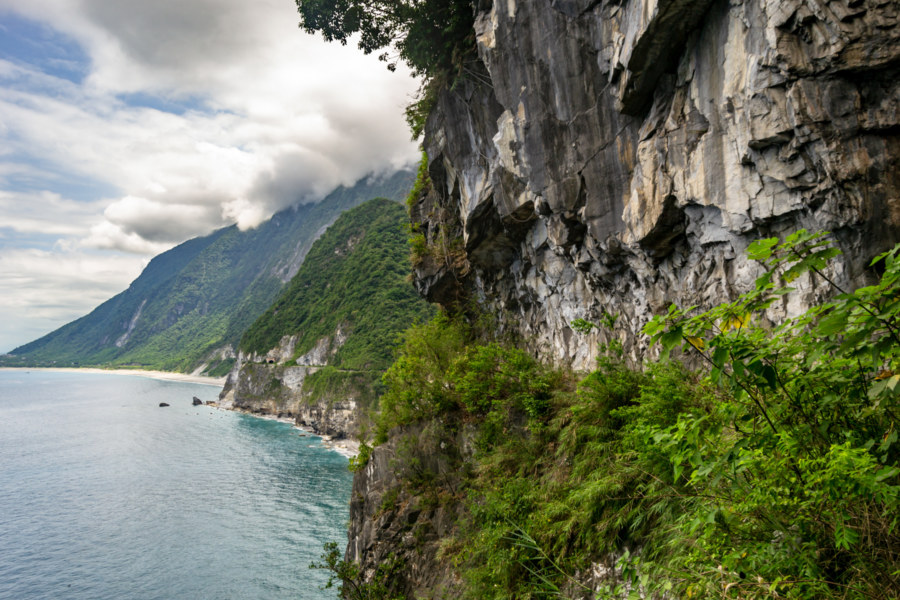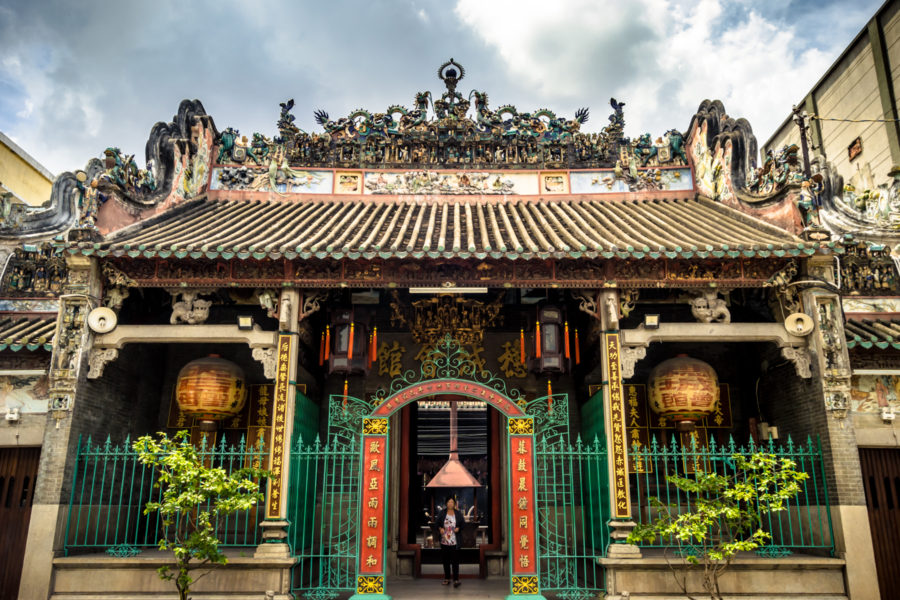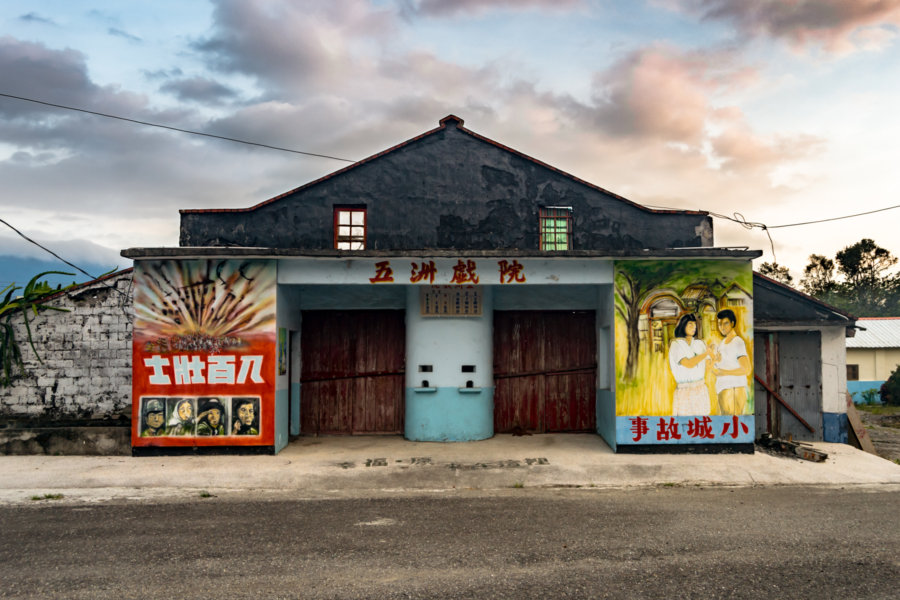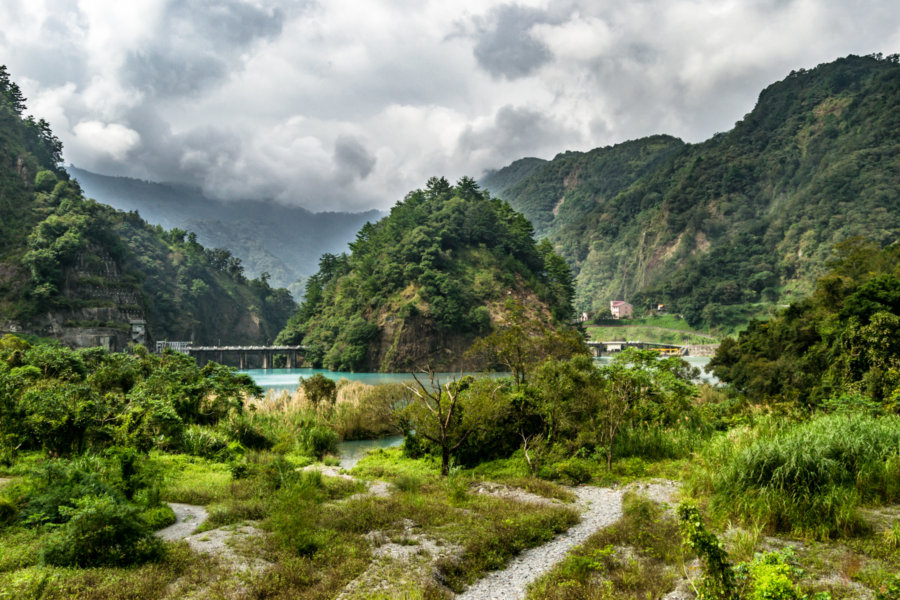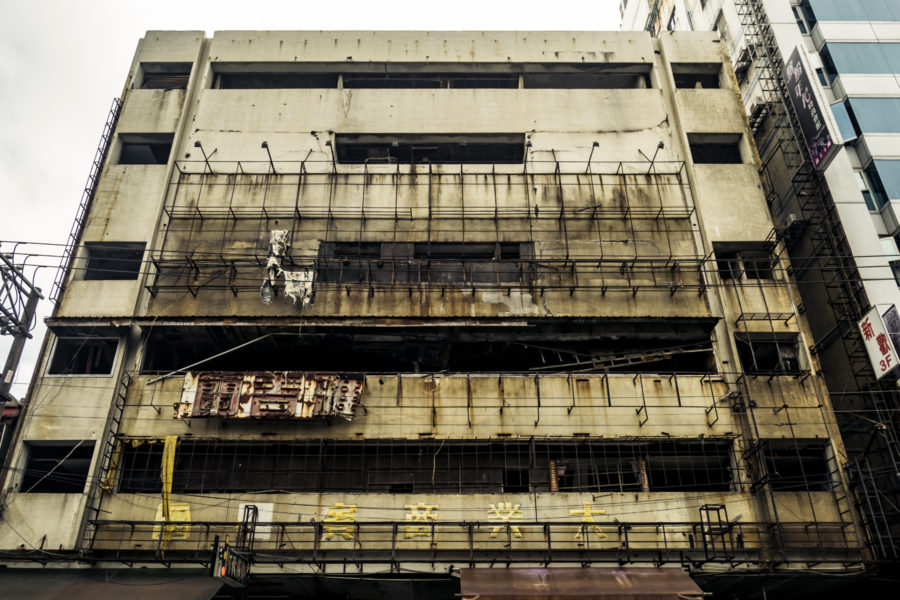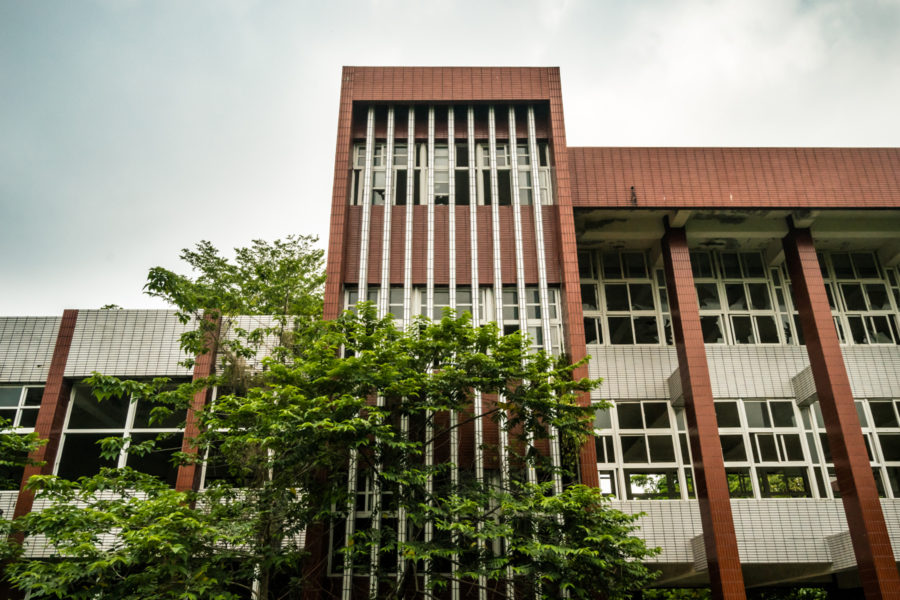Day four of riding through the Huadong Valley of eastern Taiwan in 2018 began in Yuli, the midpoint of this bicycle trip from Hualien City to Taitung City. From the weather report I knew I’d have another challenging ride ahead—yet again the mercury was due to exceed 35 degrees. Luckily I was in no great rush, as I had allocated an entire week for a trip that experienced riders could easily manage in two days. I made good use of that extra time, making numerous stops and detours to document some of the many historic and cultural sites along the way, many of them quite obscure. I ended the day in Guanshan, slightly more than 40 kilometers down the valley.
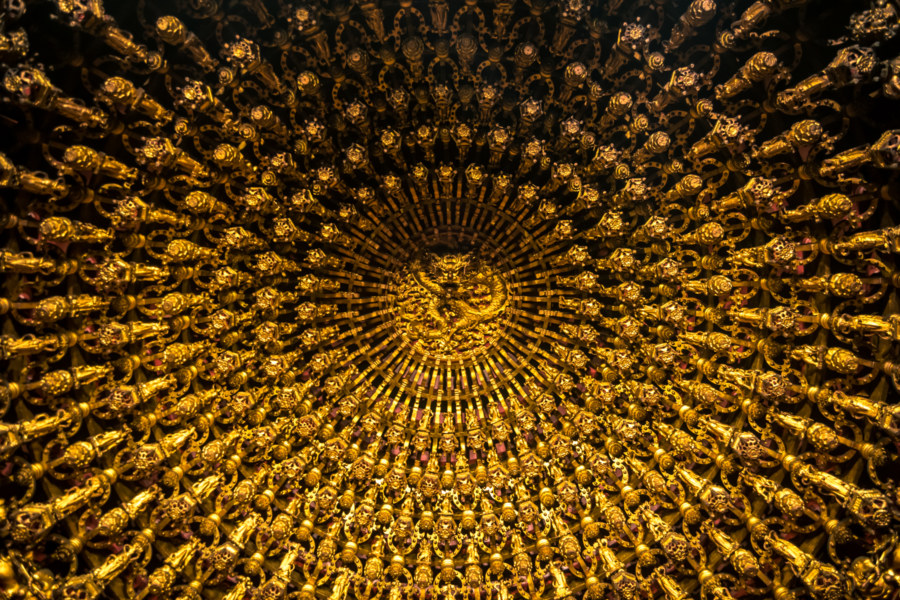
Cultural observations, insight, and confusion.
Caotun Cide Temple 草屯慈德宮
Cídé Temple 慈德宮 (also romanized as Tzude Temple) is an unusual manifestation of Taiwanese folk religion situated on a hillside overlooking the historic town of Caotun in northwestern Nantou, Taiwan. Constructed in 1984, it was inspired by the recurring dreams of a local fruit farmer, Zhāng Wénqǐ (張文杞), and funded by generous donations from the community. The main hall of the temple takes the form of a bottle gourd (葫蘆) laying on its side, and the entrance is covered by a conical bamboo farmer’s hat (斗笠). These features give the temple its peculiar shape, but they were not chosen at random; the design is inspired by ancient Chinese mythology, albeit with an idiosyncratic twist.
Huadong Valley Ride 2018: Hualien City to Fenglin
My second day of riding Huādōng Valley (花東縱谷) in 2018 was not everything I hoped it would be. I didn’t manage a proper night’s rest due to a malfunctioning air condition and woke up feeling weak and dehydrated. With temperatures hitting 35°C on the road, and with fewer convenience store stops along the way, it turned out to be the most difficult day of riding on this particular trip back in May 2018. I originally planned to detour into the mountains to visit the village of Tóngmén (銅門) and cruise around Carp Lake (鯉魚潭) on my way south. Instead I elected to head straight down Provincial Highway 9 through Ji’an and Shoufeng into Fenglin to make up for lost time. Although I didn’t see nearly as much as planned I am glad to have an excuse to return to this part of Taiwan.
Sanqing Sanyuan Temple 三清三元宮
Sānqīng Sānyuán Temple 三清三元宮 is an unusual attraction in Fuxing, immediately to the south of Lukang in Changhua, Taiwan. It was constructed over the course of nearly two decades by Huang Chi-Chun 黃奇春, a former soldier who moved here in the late 1970s. This otherwise modest structure is adorned with thousands of seashells, pieces of coral, and other oceanic oddments—which is why it is more commonly known as the Changhua Shell Temple 彰化貝殼廟.
Suhua Highway Road Trip 2018 蘇花公路機車之旅
In May 2018 I seized an opportunity to ride the beautiful and dangerous Suhua Highway (蘇花公路) from Hualien City to Su’ao in Yilan. I had previously taken this same route on bicycle back in 2013—a harrowing trip I’ll never forget—so I was eager to drive a scooter and experience it at a different pace. I also visited a number of historic sites along the way, including several former Shinto shrines, as part of an ongoing project documenting various elements of the Japanese colonial legacy in Taiwan. Much of the highway itself also owes something to Japanese engineering, having opened to vehicular traffic in 1931, but it has been continuously repaired and expanded since then.
The Chinese Temples and Guildhalls of Cholon
On several recent trips to Ho Chi Minh City I spent some time wandering around Cholon, a vast and historic Chinatown located about five kilometers west of the downtown core of colonial Saigon. Originally settled in the late 17th century by ethnic Chinese settlers, the Hoa People 華人, it was known by its Cantonese name, Tai-Ngon 堤岸 (literally “Embankment”, but it is also roughly homophonous with “Saigon”). Later the Vietnamese dubbed it Cholon (“Big Market”) after the forerunner of the modern-day Binh Tay Market. The Hoa people were once the majority in Cholon but many fled persecution in the aftermath of Fall/Liberation of Saigon in 1975, and again during the Sino-Vietnamese War. Nowadays the Hoa people only account for approximately 5% of the population of Ho Chi Minh City (less than half the proportion of ethnic Chinese living in Toronto, my hometown) but their imprint on the streets of Cholon is readily apparent, particularly in the form of the many distinctive temples and guildhalls of the district.
Chishang Wuzhou Theater 池上五洲戲院
Wǔzhōu Theater (五洲戲院) is the last remnant of cinema in Chishang, Taitung, a picturesque town located in the fertile Huadong Valley of Taiwan. Built in 1965 in the midst of the Taiwan Economic Miracle, it remained in business until 1982. After the final screening the theater was neglected for decades, falling into disrepair but remaining more or less intact until recently. More recently Chishang emerged as a tourist destination, prompting a local community development association to invest in revitalizing the theater in 2013.
Nantou Road Trip 2015: Ren’ai
My second day on the road in Nantou County in October 2015 was completely unplanned. I left Puli and headed deeper into the mountains simply to see what was there, not having done any advance research. From a glance at the map I had a rough idea where I’d be going—deeper into traditional Taiwanese Indigenous lands to the east of Puli Basin (埔里盆地). Ultimately I ended up visiting several settlements and two reservoirs in a few hours of riding around what is now known as the township of Ren’ai.
Guobin Commercial Building 國賓商業大樓
Guóbīn Commercial Building 國賓商業大樓 is an ugly ruin in the heart of Zhongli, a city of around half a million people in Taoyuan, Taiwan. Built at the dawn of the booming 1980s, it was home to a variety of entertainment businesses over the years, and appears to have been mostly abandoned sometime around the turn of the millennium. Much to my surprise I’ve not found much about this place online, which suggests whatever newsworthy calamities befell this derelict commercial building predate the era of digital journalism. Without any sources to draw upon I can only make some educated guesses about what I captured during a brief visit in the early days of 2017.
Yixin Vocational High School 益新工商職業學校
Yìxīn Vocational High School (益新工商職業學校) is a relatively obscure but not entirely unknown ruin in central Taiwan. Located along the main road running through Linnei, Yunlin, it seems to have been abandoned in the aftermath of the devastating 921 Earthquake, nearly two decades ago. Many schools were destroyed in the quake and scores more were condemned (most famously an entire university campus in Dongshi) but whether this particular school suffered the same fate isn’t certain.
